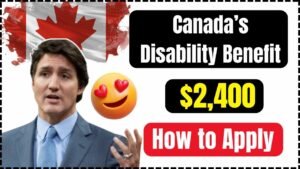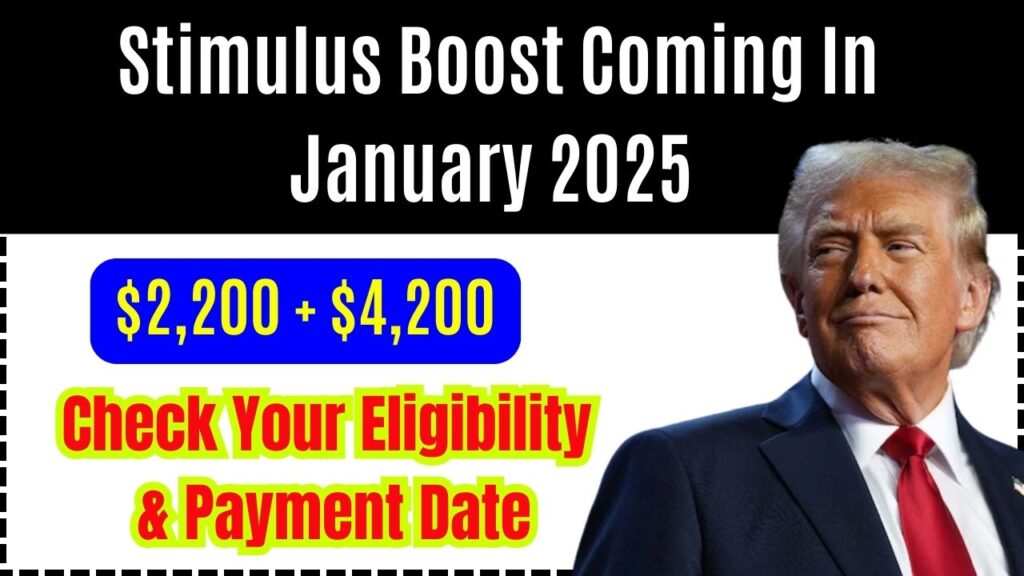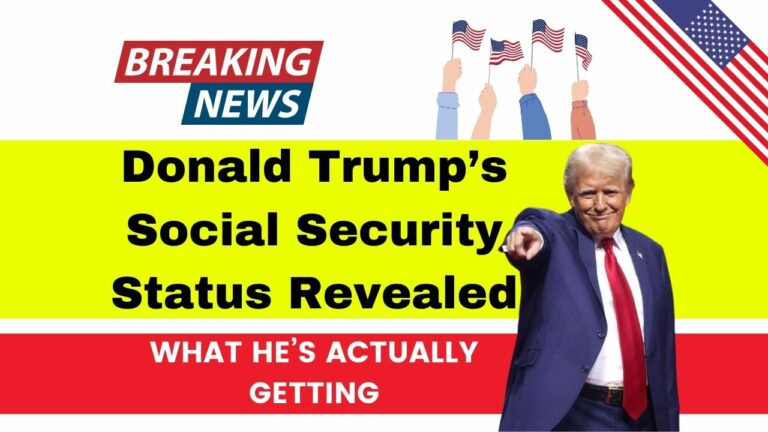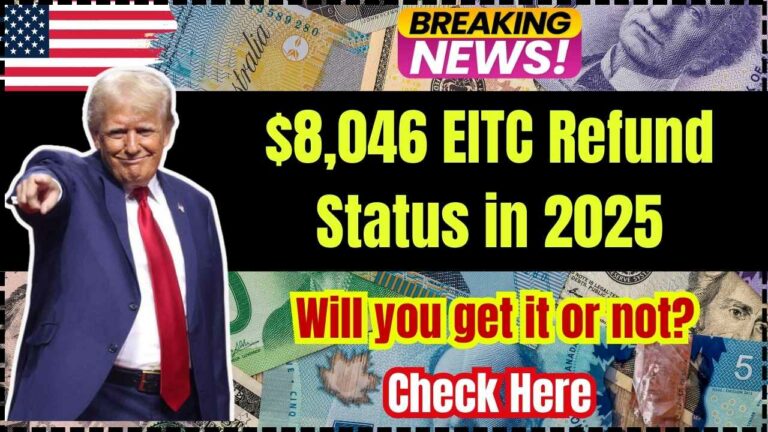Take advantage of the $2,200 + $4,200 stimulus boost to kickstart 2025! Learn how to maximize this financial lifeline, verify your eligibility, and claim your payment. This guide makes sure you’re prepared to get what you’re due with easy-to-follow instructions and trustworthy sources.
In January 2025, a $2,200 + $4,200 stimulus boost is anticipated: The rumors of a stimulus boost of $2,200 + $4,200 have drawn millions of people’s attention. You’re at the proper spot if you’re unsure if this applies to you and what to do next. In order to assist you understand your eligibility and what to anticipate, this post will simplify it and offer helpful guidance, understandable examples, and actionable insights. The purpose of this guide is to serve as your all-in-one resource on the topic.
$2,200 + $4,200 Stimulus Boost Coming In January 2025
| Feature | Details |
|---|---|
| Program Name | Federal and State Stimulus Programs |
| Maximum Payment | $2,200 (federal boost) + $4,200 (state-specific programs) |
| Eligibility Criteria | Income thresholds, tax filings, dependents, and state residency requirements |
| Payment Dates | Federal: January 15, 2025; State: Varies by state (check official websites for updates) |
| Official Resource Link | IRS Official Stimulus Page |
| Additional Support | Social Security COLA increase, child tax credits, and other relief measures |
For qualified people and families, the $2,200 + $4,200 stimulus boost is a significant chance to begin the new year with financial comfort. You may optimize your advantages by being aware of state-specific programs, completing your taxes on time, and comprehending the qualifying restrictions. Don’t forget to use official resources and, if necessary, seek financial advice.
Knowing How the Stimulus Boost Works
Let’s begin by dissecting this stimulus’s two parts:
- $2,200 Federal Stimulus: This boost stems from federal economic relief aimed at supporting families and individuals facing inflationary pressures. It is intended to help offset rising costs and provide a financial cushion.
- $4,200 State-Specific Initiatives: A number of states are providing their citizens with more tax breaks or stimulus payments. The amounts and criteria vary widely, based on local needs and state budgets. These programs often target specific groups, such as low-income households or essential workers.
Together, these benefits may total up to $6,400 for eligible people and families—a major financial lifeline to help with the rising cost of living as the year begins.
Who Is Eligible for the Federal $2,200 Boost?
To qualify for the federal stimulus, you need to satisfy particular standards. These criteria ensure that the monies are delivered evenly to those who need them most.
1. Income Thresholds
- Individuals: Earn less than $75,000 yearly.
- Married couples with combined incomes under $150,000 are filing jointly.
For instance, you are eligible if you earn $60,000 year and are unmarried. You are also qualified if you are a member of a married couple who earn $140,000 together. On a sliding scale, higher income groups may get less payouts.
2. Making a Tax Return in 2024
Your 2024 tax return is linked to your eligibility. Make that your income, filing status, and dependant information are all appropriately shown, and that you filed on time. Errors might lower the amount or cause your payment to be delayed.
3. Reliance
Additional money may be given to parents or guardians of dependents under the age of 17. For instance, a single parent with two children on a $50,000 income may receive an additional $1,400 for each child, thus boosting their overall benefit.
4. Additional Particular Situations
If they fulfill additional qualifying requirements, non-tax filers, Social Security beneficiaries, and people receiving disability benefits may also be eligible for payments.
The $4,200 State Stimulus: What About It?
Although state programs differ greatly, the following are some instances of how they operate and the people they are intended to assist:
California
For qualified citizens, California’s Middle-Class Tax Refund offers payments of up to $1,050. The growing cost of living, which includes housing and energy costs, is what these initiatives are trying to solve. Initiatives of this kind may go on until 2025.
The state of Florida
Florida has prioritized incentives for vital employees, including first responders, teachers, and nurses. Payments in 2024 varied from $1,000 to $4,200, based on the position and credentials. Additional occupations may become eligible under new programs.
New York
Homeowners who fulfill residence and income standards can receive compensation under New York’s Property Tax Rebate Program. Additionally, the program offers tenants credits to assist defray the growing cost of rent.
Other States
Similar initiatives have been implemented or are being considered in states including Illinois, Pennsylvania, and Texas. These frequently deal with housing affordability, energy assistance, and other regional issues.
For the latest information and resources to confirm your eligibility, visit the official state website.
How to Determine If You Qualify for a $2,200 + $4,200 Stimulus Increase
Uncertain whether you qualify? To find out if you qualify for both federal and state programs, take the following actions:
Step 1: Examine Earnings
Check your most recent tax return for your adjusted gross income (AGI). You are probably eligible if it is less than the necessary levels. If necessary, estimate your AGI using internet tax calculators.
Step 2: Verify Your Residence
Make sure you’ve fulfilled residency criteria for state-specific programs, which usually include residing in the state for a minimum of six months. Additional conditions, such confirmation of rent or property ownership, could apply to some programs.
Step 3: Make Use of Internet Resources
To estimate your possible payment, the IRS and some states provide online calculators and pre-screening tools. Depending on your residence status, family size, and income, these tools can provide you immediate response.
Step 4: Make an Early Tax Return
Early tax return submission guarantees that your payment will be processed on schedule. You may lose your eligibility or have your benefits delayed if you miss deadlines. Services for tax preparation might aid in guaranteeing thoroughness and accuracy.
Step 5: Keep Up to Date
Subscribe to the IRS’s or your state’s tax authority’s updates. Legislative or financial changes may affect your eligibility.
Timeline for Payment
When can you anticipate receiving the payments?
- January 15, 2025, is the date of the Federal Stimulus ($2,200). To prevent delays, make sure the IRS has the most recent version of your direct deposit information.
- $4,200 in state payments: varies. While some jurisdictions give out lump sums, others divide payouts into monthly installments. For specifics, see the timetable for your state.
The quickest and safest method to get your money is by direct deposit. Verify that your bank details are correct and current.
FAQs Regarding January 2025’s $2,200 + $4,200 Stimulus Boost
1. Am I eligible to receive both the state and federal payments?
Yes, provided that you fulfill the requirements for both. For instance, the whole $6,400 might be given to a Florida citizen who is eligible for both the federal $2,200 and the $4,200 state bonus.
2. What occurs if I fail to file my taxes by the deadline?
Although there may probably be delays, you can still claim the payout through the Recovery Rebate Credit when you submit your taxes later. In some situations, filing extensions could be possible.
3. Do those who receive Social Security qualify?
Yes, as long as they fulfill certain requirements and income restrictions, Social Security recipients frequently qualify. For some recipients, payments could be made automatically.
4. How can I stay away from scams?
For information, only consult official websites, such as irs.gov or the website of your state. Don’t give personal information to unreliable sources over the phone or by email.
5. Can I look into any other assistance programs?
Indeed, further help can be accessible through utility relief grants, housing assistance programs, or child tax credits. For additional information, get in touch with your local government.










